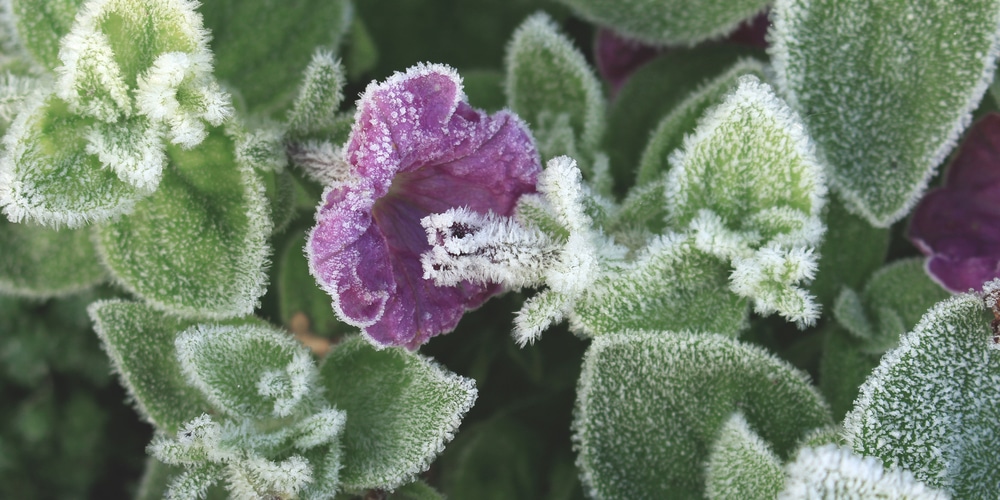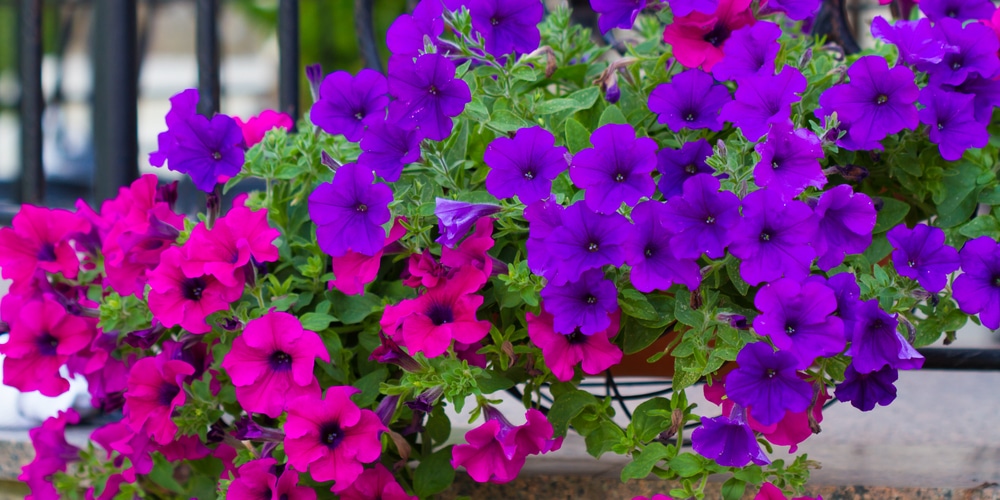One of the most beautiful flowers in the summertime is the petunia. Its vibrant colors and delicate shape make it a staple in many gardens. During the summer, its blooms last for weeks, adding color and life to any space. However, when winter comes, petunias are one of the first flowers to succumb to the cold weather. Can petunias withstand the cold weather?
How Much Frost Can Petunias Tolerate?
Petunias are not frost-resistant, and even a light frost can damage their blooms. They will start to wilt, and the leaves will turn brown. The flowers will also lose their color and eventually die. If the temperatures dip below 40°F, these beautiful flowers will not survive. Typically, gardeners will bring their potted petunias indoors at the first sign of frost.
When the temperatures outside hit 50°F, petunias will start to experience damage. If the temperatures reach 40°F or below, the plants will die. A bit of frost will not kill them, but it will damage the blooms.
If you live in an area with mild winters, you can leave your petunias outside. Just make sure to cover them on nights when the temperature is expected to dip below 50°F.
Protecting Your Petunias from Frost
Petunias are generally pretty tough flowers. They are well-known for their showy blooms and easy care, but they are not particularly frost-resistant.
Gardeners in cold climates often have to take special care to protect their petunias from the cold, otherwise, they may find their plants wilted and lifeless come spring. Here are some tips on how to protect your petunias from frost:
Choose Frost-Resistant Petunia Varieties
If you love the vibrant blooms of petunias but live in an area with cold winters, you may be wondering how to protect your plants from frost damage. One of the best ways to protect against frost is to choose petunia varieties that are known to be frost-resistant.
Some of the most popular frost-resistant petunias include ‘Supertunia Vista Bubblegum,’ ‘Tidal Wave Silver,’ and ‘Wave Pink.’ These varieties are all tolerant of cold temperatures and will continue to bloom even after a light frost.
Mulch Around the Base of Plants
Mulching around the base of your petunias will insulate the roots and help prevent them from freezing. You can use straws, hay, or even leaves for mulching material. Just make sure that the material is dry so that it doesn’t encourage mold growth.
The idea behind using mulch is that it will create a barrier between the cold ground and the petunia’s roots, helping to keep them warm.
Water Deeply Before a Frost
Make sure to water your petunias deeply before a frost is expected. This will help the plants to withstand the cold weather better.
Once the ground freezes, it will be more difficult for your petunias to get the water they need, so make sure they are well-hydrated before the freeze hits. Remember that your soil should be moist but not soggy enough that it could encourage root rot.
Additionally, you can water your petunias with a solution of one part sugar to four parts water. This will help to prevent the plants from freezing and will also give them a boost of energy. This has been shown to be an effective way to protect against frost damage.
Consider Growing Your Petunias in Pots
If you live in an area with cold winters, you may want to consider growing your petunias in pots.
While it is possible to protect petunias that are planted in the ground, it is often easier to move pots around if necessary. This way, you can bring your petunias inside if a cold snap is expected or place them in a sunny spot during the day.
Pots also offer the added benefit of drainage. If your petunias are in pots that have drainage holes, the excess water will be able to drain away, preventing the roots from getting too wet.
Move Plants to a Warmer Location
If you are expecting a cold snap, you can move your petunias to a warmer location. This could be a garage, shed, or even inside your house. Just make sure that the temperature in the new location is at least 50°F.
You can also use frost covers to protect your petunias from the cold. These covers are made from fabric and can be placed over the plants to insulate them from the cold air. Just make sure that the covers are removed during the day so that your petunias can get some sunlight.
Final Thoughts: How to Help Petunias Survive Frosty Nights
As the sun sets and the temperature begins to drop, you may find yourself rushing to bring your potted petunias indoors. However, with a little preparation, your petunias can withstand frosty nights without missing a beat.
By adding a layer of mulch to the soil and covering the plants with a light cloth, you can help to insulate them against the cold.
In addition, placing the pots near a heat source will help to keep the roots warm. With a little care, your petunias will be blooming all season long – even on the frostiest of nights.
Related Article: Will Frost Kill Geraniums?

